Top Image: June 4, 1944 Boarding party from USS Pillsbury (DE-133) working to secure a tow line to U-505’s bow. US Navy Photograph, 80-G-49172.
World War II ended for the 58 survivors aboard German submarine U-505 on June 4, 1944, about 150 miles from Rio de Oro, Western Sahara. The first enemy vessel seized at sea by the United States Navy since the War of 1812, the assault on the sub by Captain Daniel V. Gallery’s Task Group 22.3, the capture of the crew (they were subsequently transferred to Camp Ruston in northern Louisiana), and the work by a boarding party from escort carrier USS Guadalcanal ensuring it did not sink have been so ably described by my colleague Kali Martin that they need no further elaboration here.
Since 1954, the Type IX C U-boat has been an exhibit, now indoors and some 35,000 square feet, at Chicago’s wonderful Museum of Science and Industry on the South Side of the city. In June 1996, I visited the Museum and toured U-505. That was unforgettable. Never have I felt so claustrophobic in my life. That tour and watching filmmaker Wolfgang Petersen’s 1981 motion picture Das Boot (The Boat), about a WWII German submarine in the Atlantic, disabused me of any stereotypes about undersea life.
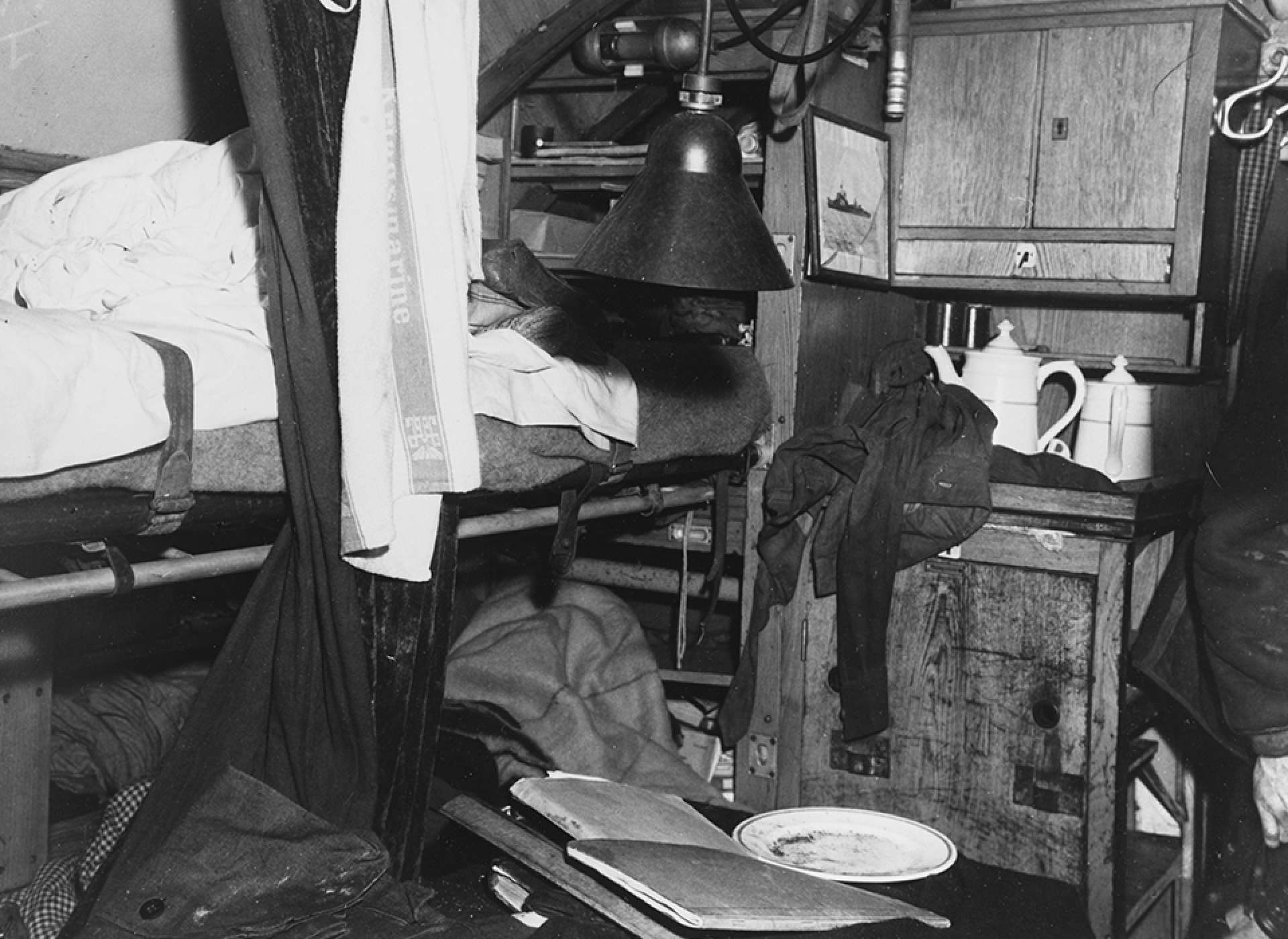
View in the Captain’s cabin, immediately after U-505 was captured by the US Navy on 4 June 1944. US Navy Photograph, 80-G-324334.
Over the years, I have wondered about U-505 and its path to the fateful confrontation with Captain Gallery’s force. Here, I just want to document the initial part of that path up to and including the U-boat’s second mission and entry into the Battle of the Atlantic.
Americans often lose sight of the fact that, on December 8, 1941, Adolf Hitler ordered Grand Admiral Erich Raeder’s Kriegsmarine (Navy) to target United States ships, as well as the vessels of Central and South American countries who expressed support for the US after Imperial Japan’s attack on Pearl Harbor. This was three days before Nazi Germany’s actual declaration of war on December 11.
Since the Third Reich had a very limited surface fleet—and as the sinking of the battleship Bismarck by the Royal Navy the previous May demonstrated—and ran tremendous risks undertaking long-range voyages, the task of taking the war to American shipping fell to the submarine force. A new phase in the Battle of the Atlantic was about to begin.
Warfare by U-boat was the purview of Admiral Karl Dönitz, commander of Germany’s U-boat arm, who had served as a submarine captain during World War I. Prior to US entry into the conflict, he already faced the none too easy mission of strangling Britain’s ability to wage war through submarine blockade. In fact, Dönitz had expanded the offensive perimeter against the United Kingdom in April 1941 by sending his vessels deep into the central Atlantic.
Now, eight months later, he faced the awesome challenge of devastating American shipping as well. Initially, Dönitz’s submarine fleet scored triumph after triumph. The year 1942 would prove to be a time of tremendous peril for the Allied war effort when the German Navy appeared to be the arm of Hitler’s armed forces which might swing the balance in favor of the Axis Powers.
Dönitz could draw on recently completed subs like U-505. Commissioned in late August 1941, it was built by workers employed by the Hamburg-based Deutsche Werft, a firm which in peacetime constructed merchant ships. Weighing over 1,100 tons, about 250 feet long, 22 feet in width, and able to dive several hundred feet, it was one of the technological terrors of the first half of the twentieth century.
Two saltwater-cooled diesel engines, each with 2170 horsepower, propelled the craft. As a Type IX C, U-505 had a range of almost 17,000 miles, meaning it could show up in the most unexpected places for merchant vessels. Patrols could actually last 100 days or more. While it could make 18 knots on the surface, the best that could be achieved below the surface was 8 knots. Submerged, it was extremely vulnerable to faster pursuers.
When it settled on a target, the submarine could bring to bear its six 21-inch torpedo tubes (four in the bow, two in the stern). Onboard were 22 of these ship-killers. U-505 also had a 4.1 inch deck gun and two anti-aircraft guns (a 20mm and a 37mm).
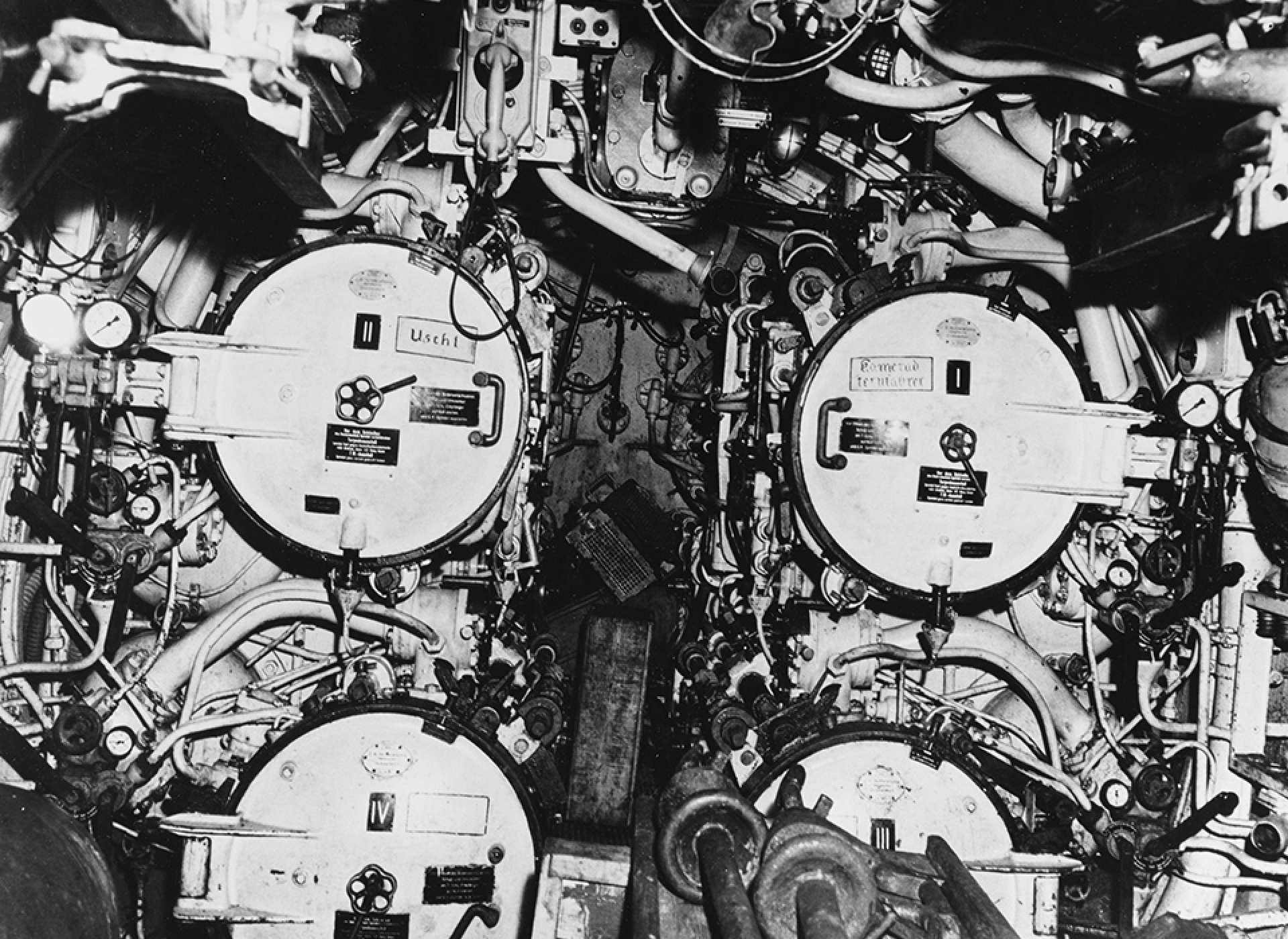
The submarine’s forward 53.3cm (21-inch) torpedo tubes, taken by a USS Guadalcanal (CVE-60) photographer on June 14, 1944. US Navy photograph, 80-G-324373.
Conditions for the crew hardly generate envy among students of World War II. While the Type IX C was larger than earlier types and could transport some 60 men, lack of space always dogged crewmembers. Only one sailor could stand in the tiny kitchen at a time. Bunk-rotating could not be avoided, because the Kriegsmarine provided a mere 35 bunks. Materials created by the Museum of Science and Industry detail just how onerous things became over time on lengthy patrols.
All provisions (eggs, cheese, rice, noodles, dried potatoes, canned and preserved meats, coffee, and beer) eventually tasted like the diesel fuel that fed the engines. To call life aboard unsanitary would be a massive understatement, as the smells associated with inadequate body hygiene commingled with diesel fumes. Moreover, it was a seemingly endless time to go without seeing daylight or breathing fresh air.
Once completed, U-505 was not rushed into combat. From late August 1941 until well into January 1942, intensive training with the 4th U-boat Flotilla claimed the time of the crew. Absolute mastery of all instruments aboard, division of responsibilities, diving, the techniques of assault on surface ships, drills for torpedo failure, how to avoid detection, and what to do if attacked and damaged comprised central goals—life-or-death goals—of the instruction.
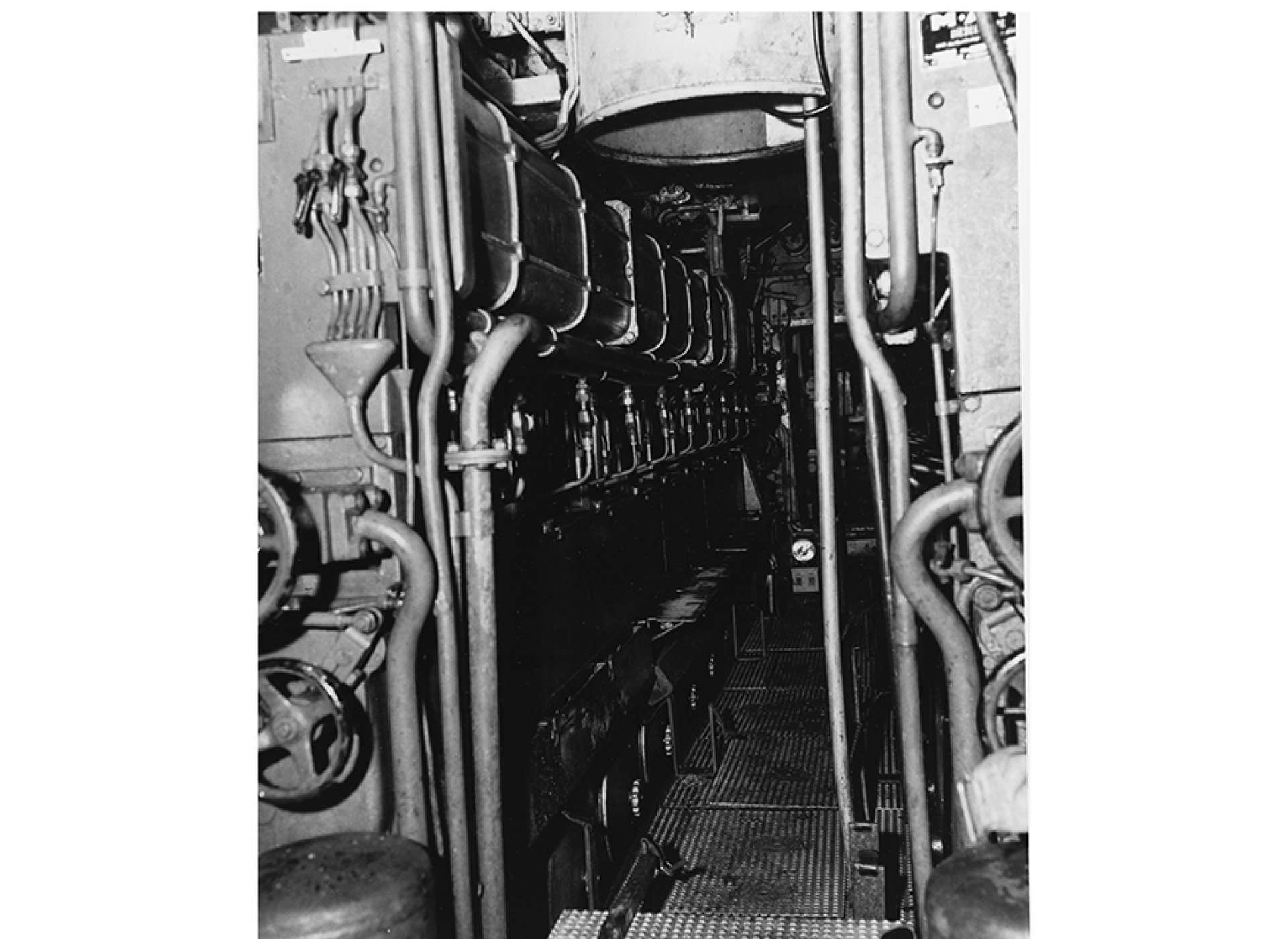
U-505's diesel engines in the submarine’s engine room, June 14, 1944. US Navy photograph, 80-G-324368.
Then, shortly after the start of the new year, in mid-January U-505, under the command of Axel Löwe set out on its first mission—circumnavigating the British Isles and arriving in France. This it did. The sub’s new home was now Lorient, in Brittany. There was little time to waste, however. Mission Two awaited.
On February 11, 1942, Löwe and U-505 embarked on their second mission. Its destination was the waters off the coast of West Africa. This U-boat had finally joined the Battle of the Atlantic.
This patrol of 86 days was quite “successful.” U-505 sank four ships (one American, one British, one Norwegian, and one Dutch). The US craft, the cargo ship West Irmo, was struck by one of the U-boat’s 21-inch torpedoes on April 3, 1942, about 300 miles southwest of Sekondi-Takoradi, in Ghana.
These victims of U-505 were among the more than 1,100 Allied ships brought down by Dönitz’s submarine arm in 1942. If it was a “happy time” for Dönitz’s men and their Führer, 1942 was a year of incredible danger for US and British leaders.
Through gigantic technological and organizational innovations, though, the Allies turned the proverbial “tide” in the Battle of the Atlantic in 1943. And those innovations would make Atlantic patrols an especially fraught venture for the crew of U-505 well before the capture of the sub in June 1944.
Jason Dawsey, PhD
Jason Dawsey, PhD, is ASU WWII Studies Consultant in the Jenny Craig Institute for the Study of War and Democracy.
Cite this article:
MLA Citation:
APA Citation:
Chicago Style Citation:
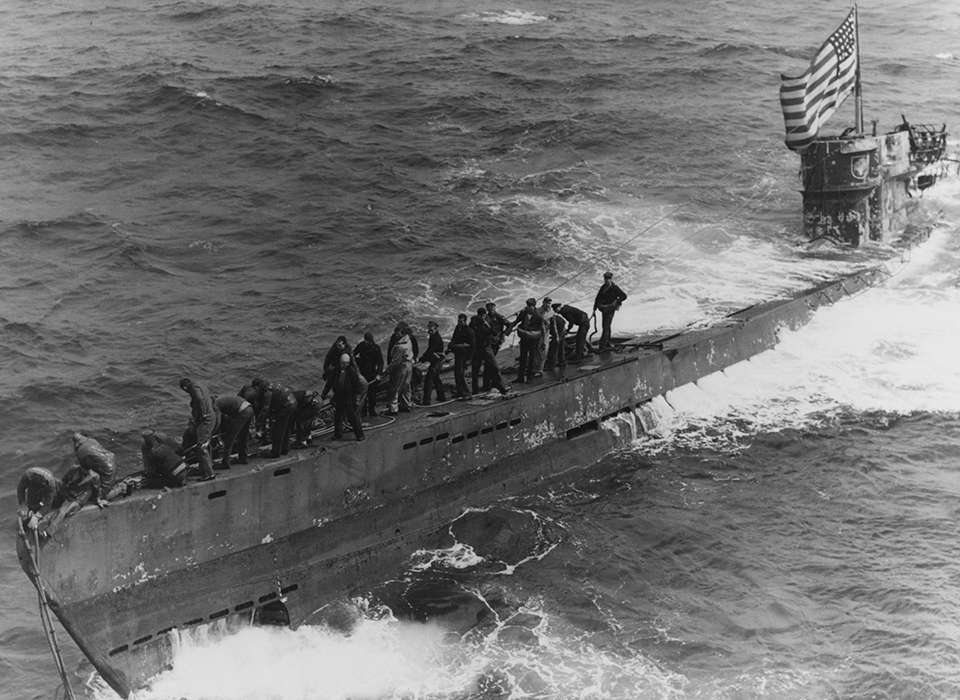

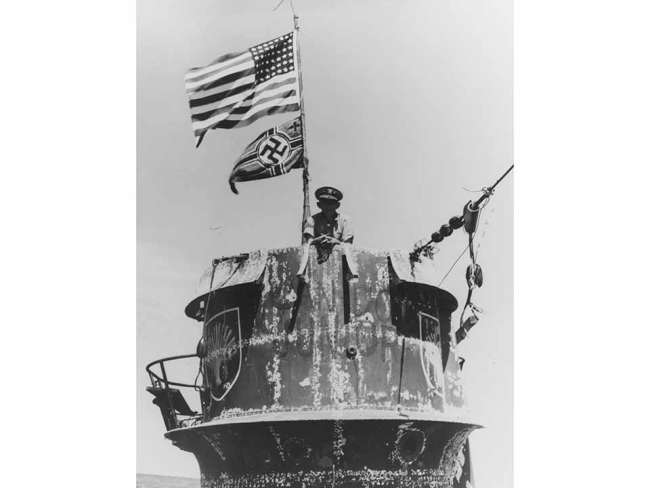



![Max Fuchs, New York City cantor, sings as Rabbi Sydney [sic] Lefkowitz, Richmond, VA, conducts the first Jewish services from Germany.](/sites/default/files/styles/max_650x650/public/2025-10/image1.jpg)



